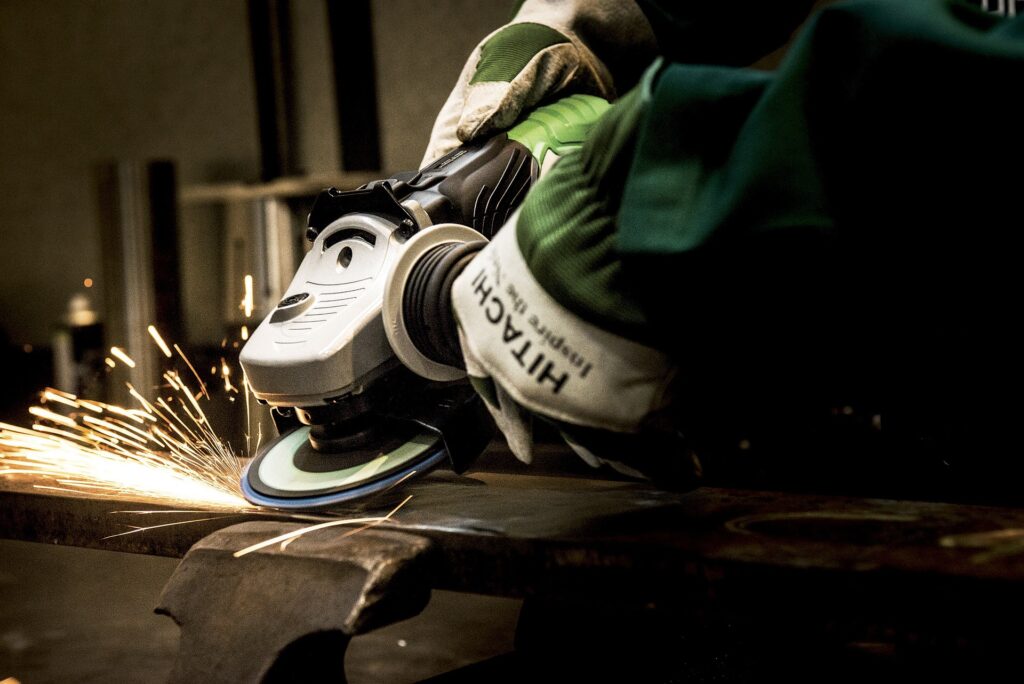Power tools
The Evolution of Power Tools: A Historical Overview

The evolution of power tools is a testament to human innovation and the relentless pursuit of efficiency and convenience.
From crafting intricate woodwork to constructing towering skyscrapers, power tools have been indispensable companions in the hands of builders, craftsmen, and do-it-yourself enthusiasts. The history of power tools is a story of innovation, ingenuity, and the relentless pursuit of efficiency. In this blog post, we embark on a historical journey through time, tracing the evolution of power tools and their transformative impact on various industries.
The Birth of Mechanical Advancement
The concept of power tools can be traced back to the early days of human history when simple machines like levers and pulleys were used to amplify human strength. However, it was during the Industrial Revolution in the 18th and 19th centuries that significant advancements in machinery and automation paved the way for modern power tools.
Steam-Powered Machinery (Late 18th Century)
The Industrial Revolution introduced steam power as a driving force for machines. Steam engines powered not only factories but also early mechanical tools. One of the earliest power tools was the steam-powered lathe, which revolutionized woodworking and metalworking.
Electricity Unleashed (Late 19th Century)
The late 19th century saw the emergence of electrical power, leading to a breakthrough in the development of power tools. Electric motors replaced steam engines, making tools more compact, efficient, and accessible.
The Pioneering Years
As electricity became more widespread, inventors and engineers began experimenting with various power tool designs. Some of the most significant advancements during this period included:
Electric Drills (Late 19th Century)
The electric drill, invented by Arthur James Arnot and William Blanch Brain in 1889, marked a turning point in power tool history. Electric drills allowed for faster and more precise drilling, making construction and woodworking tasks significantly more efficient.
Portable Saws and Sanders (Early 20th Century)
In the early 20th century, portable circular saws and sanders were developed. These tools revolutionized woodworking by allowing craftsmen to make accurate cuts and achieve smoother finishes.
World War II and Beyond
The mid-20th century witnessed rapid advancements in power tool technology, driven in part by the demands of World War II and the subsequent economic boom.
The Impact of World War II
During the war, power tools played a pivotal role in manufacturing weapons, vehicles, and equipment. This period saw the refinement of existing tools and the development of new ones, such as powered screwdrivers and impact wrenches, which were crucial for assembly and maintenance.
The Rise of Cordless Tools (1960s)
The 1960s brought the invention of cordless power tools, a game-changer for industries and DIY enthusiasts alike. Cordless drills and saws allowed for greater mobility and versatility, eliminating the need for extension cords and power outlets.
Modern Era Innovations
The latter half of the 20th century and the early 21st century witnessed remarkable innovations in power tool technology, leading to tools that are more powerful, efficient, and user-friendly.
Computer-Aided Design (CAD) and Precision Tools
The integration of CAD technology into power tool design led to the development of highly precise and customizable tools. CNC (Computer Numerical Control) machines and laser-guided saws became essential in various industries, including manufacturing and construction.
Battery Technology
Advances in battery technology have greatly improved cordless power tools. Lithium-ion batteries, in particular, have become the standard, providing longer runtimes and faster charging, further enhancing the portability of power tools.
Smart and Connected Tools
In recent years, power tools have become smarter and more connected. Some models are equipped with Bluetooth technology and smartphone apps, allowing users to monitor and control tool settings remotely.
The Future of Power Tools
As technology continues to advance, the future of power tools promises even more exciting developments:
Green Technology: With a growing emphasis on sustainability, we can expect power tools to become more energy-efficient and environmentally friendly, reducing their carbon footprint.
Robotics and Automation: Automation and robotics are likely to play a more significant role in industries that use power tools, further enhancing precision and productivity.
Safety Features: Power tools of the future may incorporate advanced safety features such as real-time hazard detection and automatic shut-off mechanisms.
Augmented Reality (AR) Integration: AR could enhance the user experience by providing visual instructions, measurements, and real-time feedback while using power tools.
Conclusion
From the steam-powered machines of the Industrial Revolution to the smart, connected tools of the 21st century, power tools have played a pivotal role in shaping industries and empowering craftsmen and builders worldwide.
As we look toward the future, power tools are poised to continue their transformation, becoming more sustainable, precise, and technologically advanced. In doing so, they will not only make our work easier but also pave the way for new possibilities in construction, manufacturing, and the world of DIY. The story of power tools is far from over; it’s a narrative of progress that continues to unfold.
More reading
What Happened to the Tools Brand GMC?